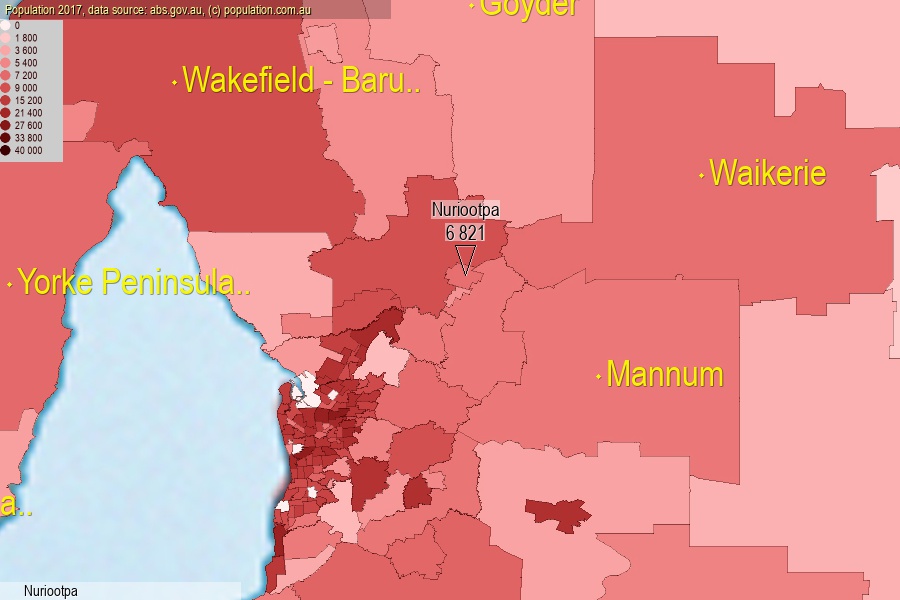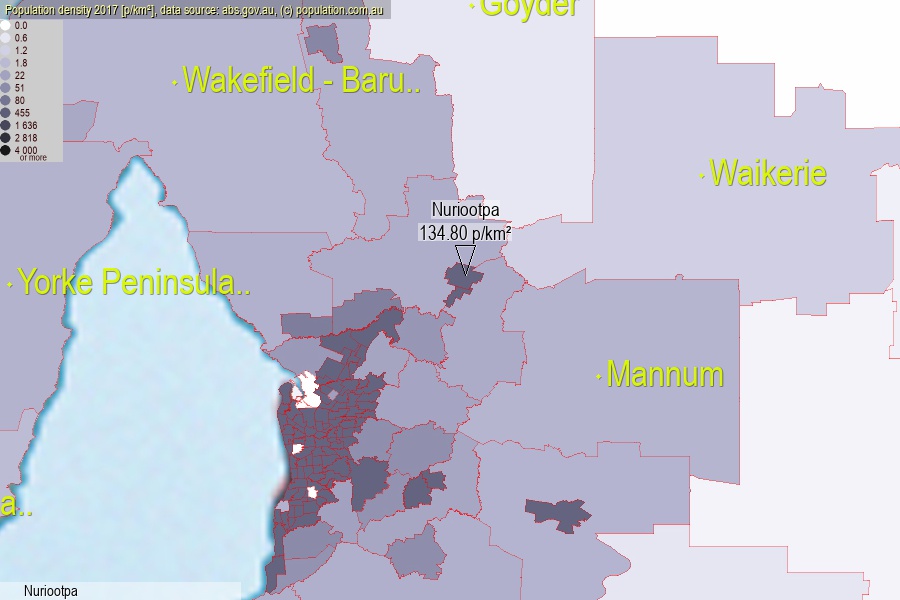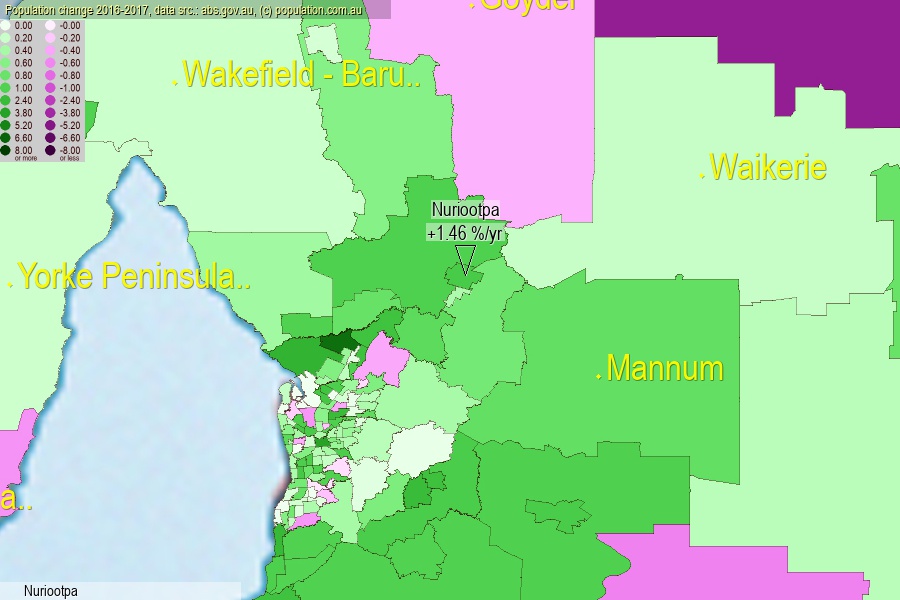 population.com.au
population.com.auLast official estimated population of Nuriootpa (as Statistical Area Level 2) was 6 821 people (on 2017-06-30)[2]. This was 0.03% of total Australian population and 0.393% of SA population. Area of Nuriootpa is 50.60 km², in this year population density was 134.80 p/km² . If population growth rate would be same as in period 2016-2017 (+1.46%/yr), Nuriootpa population in 2025 would be 7 658. [0]



Click to enlarge. Nuriootpa is located in the center of the images.
Population [people], population density [p./km²] and population change [%/year] [2]
View borders » (new window) [4]
[1991-1992] +4.87 %/Yr.
[1992-1993] +2.02 %/Yr.
[1993-1994] +2.29 %/Yr.
[1994-1995] +4.19 %/Yr.
[1995-1996] +1.77 %/Yr.
[1996-1997] +1.67 %/Yr.
[1997-1998] +2.46 %/Yr.
[1998-1999] +0.08 %/Yr.
[1999-2000] +0.90 %/Yr.
[2000-2001] +1.59 %/Yr.
[2001-2002] +1.77 %/Yr.
[2002-2003] +2.62 %/Yr.
[2003-2004] +1.25 %/Yr.
[2004-2005] +1.50 %/Yr.
[2005-2006] +3.98 %/Yr.
[2006-2007] +2.24 %/Yr.
[2007-2008] +1.75 %/Yr.
[2008-2009] +1.86 %/Yr.
[2009-2010] +2.49 %/Yr.
[2010-2011] +1.61 %/Yr.
[2011-2012] +1.95 %/Yr.
[2012-2013] +1.93 %/Yr.
[2013-2014] +1.97 %/Yr.
[2014-2015] +2.34 %/Yr.
[2015-2016] +2.38 %/Yr.
[2016-2017] +1.46 %/Yr.
[0] Calculated with linear interpolation from officially estimated population
[1] Read more about SA2 and Australian Statistical Geography Standard (ASGS) on abs.gov.au
[2] Population data from Australian Bureau of Statistics (Population and density: 2017; change: 2016-2017)
[3] Digital Boundaries: Australian Statistical Geography Standard (ASGS) 2016.
[4] Border coordinates are simplifyed using Ramer-Douglas-Peucker algorithm.